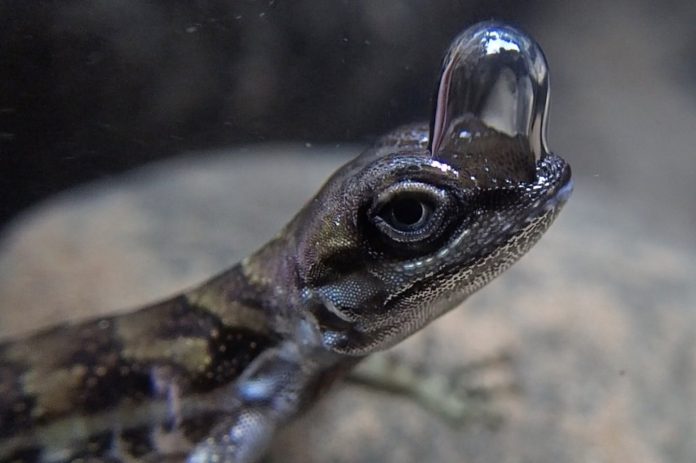The Anole: The World’s Smallest Scuba Diver Unveiled!
When we think about the best divers in the animal kingdom, we often picture majestic dolphins or agile seals, right? But let me introduce you to a surprising contender that has just earned the title of the world’s smallest scuba diver: the Anole! This tiny lizard has some incredible tricks up its sleeve that allow it to evade predators in a rather unique manner.
Who is the Anole? Meet the Smallest Scuba Diver
The anole is a small lizard native to the tropical regions of the Americas. With its vibrant hues and quick movements, it has quite the charm. But don’t let its size fool you—it’s a master of survival, particularly in its impressive scuba-diving feats. Just imagine, a fearsome predator hunting you down, and your best escape plan involves diving underwater—that’s a thrilling escape!
Anole’s Unique Survival Technique: Diving Deep
The Anole has a fascinating survival tactic. When threatened, it can swiftly dive into the water, where it can hold its breath for at least 20 minutes—that’s impressive for such a small creature! This remarkable ability not only allows it to evade its long list of predators, such as birds and snakes, but also showcases the versatility of lizard survival methods in the wild.
How Does the Anole Breathe Underwater?
Exciting new research from Binghamton University has uncovered the science behind the anole’s underwater escapades. These scrappy lizards have a unique trick—they use their own breath to create an air bubble, which allows them to remain submerged much longer than without it. This bubble is essential; it acts as a lifeline, helping them to breathe without needing to resurface.
But what’s the secret behind this clever method? According to Lindsey Swierk, an assistant research professor of biological sciences, the bubble sticks to the anole’s scales because of the hydrophobic nature of their skin, which means it repels water. So, when they dive, this bubble forms and traps oxygen, enabling the lizard to breathe while hiding from predators.
Bubbles as a Functional Part of Anole Respiration
Researchers initially speculated whether this ability to stay submerged was just an adaptive side effect of their skin or a reflex, but the findings suggest it’s much more than that. The air bubble acts as a functional respiratory tool, allowing them to linger underwater longer. Isn’t it fascinating how nature finds a way to optimize survival?
Swierk also pointed out that without the bubble, these little lizards wouldn’t be able to dodge danger as effectively. A study showed that lizards not covered with an emollient— which interrupts the formation of bubbles—could hold their breath about 32% longer compared to those with blocked bubble creation.
The Anole’s Camouflage: Blending In Underwater
Another astonishing aspect of the anole’s diving prowess is its ability to camouflage itself when submerged. These little lizards don’t just rely on the air bubble; they can alter their behavior to blend well into their aquatic environment. Remaining still underwater further increases their chances of escaping detection and prolongs their time spent hidden from predators lurking above.
This skill to remain motionless and nearly invisible under the water surface allows the anole to be one step ahead, making it a true survivalist among lizards. You might say, when faced with danger, these creatures become the "chameleons of the water".
The Importance of Understanding Anole Behavior
The implications of this research are profound. Not only does it shine a light on the adaptive significance of the air bubble in anole respiration, but it also expands our understanding of how species evolve in response to their environments. It’s a remarkable example of nature’s ingenuity, demonstrating that even the smallest creatures have developed complex mechanisms for survival.
Swierk’s pioneering work offers a fresh perspective on the adaptive traits of lizards and bolsters our appreciation for the intricate relationships within ecosystems.
Wrapping It Up: The Anole’s Scuba Diving Adventures
In conclusion, the anole represents more than just a spectacle of nature. With its impressive underwater diving capabilities, it transcends what we thought possible for such a small lizard. Nature continues to surprise us, highlighting that sometimes, the most unassuming creatures can boast the most fascinating survival techniques.
Now, next time you encounter an anole skimming across your garden or basking in the sun, remember its secret scuba diving superhero skills! Doesn’t it remind you that everyone—regardless of size—has hidden talents waiting to be discovered?

